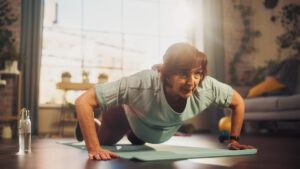People often ask how a bike fit with a physical therapist is different from one at a cycling shop. Clients or prospective clients have stated “I had a bike fit.” And it is possible your bike was fit to you, but the real question is, were you fit to your bike?
While height is an important component of a bike fit, there are many aspects of a person’s anatomy that can cause a bike to be ill fitted, including, but not limited to: torso length, leg length, arm length, saddle preference or handle bar preference. Beyond anatomy, we also need to know if a rider is experiencing pain while on the bike or if s/he is riding his/her bike differently because of the pain. Finally, has his/her body experienced any changes since his/her last bike fit? These are all things that we as physical therapists consider when looking at a bike fit and can talk to the patient about how s/he is experiencing pain and how that effects his/her cycling.
Case Study
Recently, a client came to us with reports of low back pain. Since the onset of that pain, he has been unable to comfortably ride his mountain bike, road bike, or commuter bike. The client stated he also may have a possible leg length discrepancy. Bike Fit evaluation revealed that he has an increased trunk angle, and a decreased knee angle, which places him “knee behind pedal” during his cycling stroke.
It appears he has been riding with a saddle height that is too high and aft (behind seat post), which increases the glute and hamstring load with his “knee behind pedal” measurement. Therefore, he may be placing increased load on his posterior chain (glute and hamstring muscles) and causing increased strain and compression in his lumbar spine. His leg length discrepancy is also exaggerated by increased saddle height and increased reach to the handle bars. This was evident while evaluating his pedal stroke from the front while using a laser to line up his hip, knee and foot throughout his stroke. His shorter lower limb was rotating in and out of neutral to accommodate for the increased reach.
We opted to start by only making a couple of key adjustments, including decreasing his saddle height and moving the saddle forward on the seat post. By decreasing the saddle height and moving the saddle forward it decreased the reach his legs needed and decreased the amount of flexion in his lumbar spine, which provided immediate relief of his low back discomfort. We did not make any changes to his bike fit to account for his leg length discrepancy. He stated he is more aware now of the rotation and compensation on his shorter side and he will try to be cognizant of this while riding. He is ready to hit the road and enjoy pain free cycling once again.
When was your most recent Bike Fit? Are you riding pain free? Call today to schedule with Lauren Esmailka, PT, our bike fit specialist.






